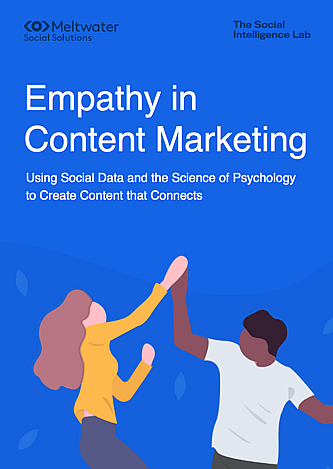Personas: an essential element in any content strategy

How well do you know your audience?
By building personas, you are facilitating the process of deciding how you will be building your content ecosystem, which platforms you will use, what tone you will take, what types of content you will create.
“[Personas] are a method of market segmentation wherein we collect a combination of qualitative and quantitative data to build archetypes of the members of our target audience.”
Michael King, over at Moz, has published an EXTENSIVE article on personas, the tools available to help you create them, how to do qualitative and quantitative research, etc.
It is just shy of 12,000 words. Don’t be scared. A one-hour read.
And it’s all about knowing your audience. A key step in building any content strategy: Personas.
It is a goldmine, a reference on the subject. You might not read it in one shot right away, but you will keep this article handy for when you need to be analyzing your audience.
A must-keep resource for some time. Bookmark his article.
As media fragmentation continues to grow, it becomes even more important to know who you will be publishing content to. Knowing them almost on a personal basis. What they like, how they think, who they are.
As media, brands and publishers are targeting niche markets more and more each day (and this is what will be key in the future, avoiding mass media targets that are too hard to measure), personas give a personality to the people consuming your content.
Attention and empathy

“ATTENTION IS THE RAREST AND PUREST FORM OF GENEROSITY.” – SIMONE WEIL
For several months now, I have been wondering what attention is, how to get it, how to keep it when someone grants you theirs, etc.
In the conferences I give, I often talk about the importance of the fact that when someone views or reads your content, they agree to give you some of the attention they have in their day.
It is up to you to take care of it and make sure that he/she does not regret this action so that he/she can give it to you again next time.
It is essentially an exchange. You give them value, and they give you attention. If the value is there, trust is built and you might have their attention again the next time they have the opportunity.
The content you produce must therefore bring value, and this perception of value can be very different from one person to another.
Hence the importance of knowing your audience, your people, and being able to show empathy.
Benoit Giguère, Vice President, Creative and Content at Brandbourg, has an excellent way of explaining this: Imagine how different people perceive a cow, between you, a butcher, a veterinarian, a child, etc.
The same cow is very, very different for each of these people.
In an article published by Brain Pickings, we discover an excellent book that demonstrates it all: “On Looking: Eleven Walks with Expert Eyes.” The author, Alexandra Horowitz, walked around her city block, in New York City, with 11 experts from very different backgrounds. A geologist, an artist, a sound designer, etc.
The perception and the way in which each person “sees” the same block is fascinating.
The article is an excellent summary of the book (and very thorough… 37 minutes of reading!), but I didn’t read it in full.
Why?
I immediately ordered the book.
How to use empathy in your content initiatives

Having a deep understanding of your audience is key. You know it. And empathy plays a big role in creating a strong connection with your audience.
How can you use social data and the science of psychology to really connect with the people you are producing content for?
We keep saying it, there’s too much content out there. And most of it is definitely subpar. So how can you differentiate from the mass of content available?
One way is to focus on emotion and empathy. To create a connection at an emotional level rather than a too shallow functional level.
The science of psychology can help you with this.
But how can you find insights, social signals and information that will help you build a data-driven-yet-emotional-
Dr. Jillian Ney has written a comprehensive guide that introduces you to the psychology of content. A great read designed to help you get closer to your customer, and has she puts it: “so you know what makes them tick.”
It is structured in a very simple yet powerful way:
- The psychology of decisions
- Why empathy is your secret superpower
- Why you’re probably using the wrong social data in your content strategy
- Why it’s time to prioritize brand storytelling
- Using social data for empathetic content inspiration
At 30 pages, it might look like a long read, but it is packed with actionable information. It was written to promote Sysomos/Meltwater tools, but you will still find valuable information that you can apply right away in your own journey towards more empathetic content.
Emotion detection and your content

Empathy and the understanding you have of the emotional state of your audience are at the heart of the success of your content.
When we give a masterclass on content strategy and personas, we spend a lot of time on a notion that is essential to understanding and knowing the audience of a brand.
Empathy.
It is defined as the ability of a person to put themselves in another person’s shoes. To understand how the person feels, what they are experiencing and how they perceive (for example) the messages and content coming from your brand.
It is a central element in a Design Thinking approach, which aims to solve a problem but from the user’s point of view, rather than from the company’s point of view.
We could practically say that your knowledge of your personas is directly related to the emotional quotient of your company, which is defined by Mayer and Salovey as “the ability to perceive and express emotions, to integrate them to facilitate thinking, to understand and reason with emotions, and to regulate emotions in oneself and in others.
So, does your content take into account the emotional state of its readers, its audience at each step of the buying process?
The question that many marketers ask themselves is whether it would be possible to detect the emotion experienced by a consumer during their interactions with your brand. It can manifest itself in the way they express themselves during a call with your customer support, but it could also be expressed in the way they choose the content they consume.
An article by Andrew Mort published by Customer Think provides an overview of emotion detection and how it could be used to support the communication and marketing of brands.
Community managers have already started using some tools to filter comments and mentions according to the emotion conveyed, allowing them to focus on dissatisfied customers (for example). The Sentinel tool, developed in Montreal, integrates such a filter into its comments and mentions management platform.
The idea here is not to spy on your audience, to play in their heads to detect their emotions, but rather to invite you to think about the state in which a person can be when they want to be informed, educated or entertained by your brand, and to integrate these insights into the tone and manner you will take in any piece of content.
Your personas and empathy

Being able to understand your personas at their core requires deep empathy.
In our content strategy masterclasses, we spend a good part of the day discussing personas, how we must understand them through empathy and design thinking, and how this allows your overall content program to be deeply rooted into what the needs and desires of your audience are.
Marketers need to empathize with their audience at all levels.
Creating content cannot be based on the old model of the sales funnel. It needs to understand the problem your product or service solves, and frame the narrative through that lens.
In a Forbe’s article, Serenity Gibbons dives deeper into the why and how marketers can build these notions into their workflow and strategy sessions.
Addressing human motivators, working with emotional triggers, and making sure the consumer is the hero of your story are three elements that will make your content strategy connect more strongly with your audience.
Would you like to develop your personas even better? Let us know and schedule a consultation with our experts at Toast today.



